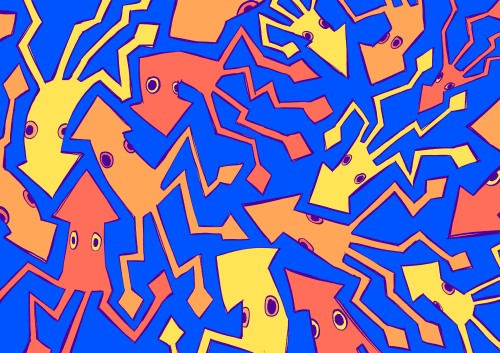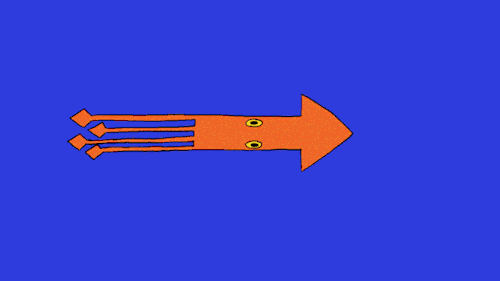Same Energy

Same energy
The caine art belongs to @bkbeemz
More Posts from Ajthehumanbeing and Others
clingy girlfriend and clingy boyfriend 💞

I've been yearning lately incase you can't tell ^^

crazed stp fan desperately tries to figure out the logistics of beak kiss: settles on french








My first anatomy tutorial. How I connect arms to the torso. Simplified the muscles for better comprehension
PS. Pectoral is misspelled as “pectorial” in the picture. Don’t make that mistake haha
And I’d love to see the art made from using these as reference, you can message or tag me.. whatever you want
Edit: The extended names of the muscles:
Neck - Sternocleidomastoideus
Traps - Trapezius
Lats - Latissimus Dorsi
Diver convince octopus to trade his plastic cup for a seashell

Casper Octopus (Casper sp.), family undetermined, Nazca Ridge, off the Coast of Peru (Pacific Ocean)
Recently discovered, 2016.
photograph via: Ocean Census
they’re talking to each other omg (‘:
"... And I was thinking that, the red frog failed and fell back once again. Soon, I began to grow tired of watching him."
- Red Frog, Shimaki Kensaku

I love how Matsui-sensei decided to use "The Red Frog" by Shimaki Kensaku in this scene... As if Koro-sensei was mocking Karma and his failure to assassinate Koro-sensei using the quote from the literary piece, when he looked at Karma when he said the quote.
A List of Poetic Terms
anaphora the repetition of a word or phrase, usually at the beginning of a line.
alliteration the repetition of sounds in a sequence of words.
allegory narrative with two levels of meaning, one stated and one unstated.
apostrophe direct address to an absent or otherwise unresponsive entity (someone or something dead, imaginary, abstract, or inanimate).
assonance the repetition of vowel-sounds.
beat a stressed (or accented) syllable.
binary dual, twofold, characterized by two parts.
blank verse unrhymed iambic pentameter.
caesura an audible pause internal to a line, usually in the middle. (An audible pause at the end of a line is called an end-stop.) The French alexandrine, Anglo-Saxon alliterative meter, and Latin dactylic hexameter are all verse forms that call for a caesura.
chiasmus from the Greek letter Chi ( Χ ), a "crossed" rhetorical parallel. That is, the parallel form a:b::a:b changes to a:b::b:a to become a chiasmus.
climax the high point; the moment of greatest tension or intensity. The climax can occur at any point in a poem, and can register on different levels, e.g. narrative, rhetorical, or formal.
consonance the repetition of consonant-sounds.
couplet two lines of verse, usually rhymed. Heroic couplet: a rhymed iambic pentameter couplet.
diction word choice, specifically the "class" or "kind" of words chosen.
elegy since the 17th century, usually denotes a reflective poem that laments the loss of something or someone.
end-stopped line a line that ends with a punctuation mark and whose meaning is complete.
enjambed line a "run-on" line that carries over into the next to complete its meaning.
foot the basic unit of accentual-syllabic and quantitative meter, usually combining a stress with one or more unstressed syllables.
free verse poetry in which the rhythm does not repeat regularly.
imagery the visual (or other sensory) pictures used to render a description more vivid and immediate.
meter a regularly repeating rhythm, divided for convenience into feet.
metonomy a figure of speech in which something is represented by another thing that is commonly and often physically associated with it, e.g. "White House" for "the President."
ode a genre of lyric, an ode tends to be a long, serious meditation on an elevated subject.
prosody the study of versification, i.e. the form—meter, rhyme, rhythm, stanzaic form, sound patterns—into which poets put language to make it verse rather than something else.
refrain a phrase or line recurring at intervals. The definition does not require that a refrain include the entire line, nor that it recur at regular intervals, though refrains often are and do.
rhythm the patterns of stresses, unstressed syllables, and pauses in language. Regularly repeating rhythm is called meter.
scansion the identification and analysis of poetic rhythm and meter. To "scan" a line of poetry is to mark its stressed and unstressed syllables.
simile a figure of speech that compares two distinct things by using a connective word such as "like" or "as."
speaker the "I" of a poem, equivalent to the "narrator" of a prose text. In lyric poetry, the speaker is often an authorial persona.
speech act the manner of expression (as opposed to the content). Examples of speech acts include: question, promise, plea, declaration, and command.
stanza a “paragraph” of a poem: a group of lines separated by extra white space from other groups of lines.
symbol an image that stands for something larger and more complex, often something abstract, such as an idea or a set of attitudes.
symbolism the serious and relatively sustained use of symbols to represent or suggest other things or ideas. (Distinct from allegory in that symbolism does not depend on narrative.)
synecdoche a figure of speech in which a part of something is used to represent the whole, e.g. “wheels” for “car.”
tone the speaker’s or author’s attitude toward the reader, addressee, or subject matter. The tone of a poem immediately impresses itself upon the reader, yet it can be quite difficult to describe and analyze.
topos a traditional theme or motif (e.g. the topos of modesty).
trope a figure of speech, such as a metaphor (trope is often used, incorrectly, to mean topos)
valediction an act or utterance of farewell.
If these writing notes helped with your poem/story, please tag me. Or leave a link in the replies. I'd love to read them!
More: Word Lists

-
 megacandy420 liked this · 2 months ago
megacandy420 liked this · 2 months ago -
 gorgeousdecepticon liked this · 3 months ago
gorgeousdecepticon liked this · 3 months ago -
 thegoopershome liked this · 3 months ago
thegoopershome liked this · 3 months ago -
 fumingdragon278 liked this · 4 months ago
fumingdragon278 liked this · 4 months ago -
 colonelcat liked this · 4 months ago
colonelcat liked this · 4 months ago -
 thelivingdiary liked this · 5 months ago
thelivingdiary liked this · 5 months ago -
 ferrretwc liked this · 6 months ago
ferrretwc liked this · 6 months ago -
 3verlark liked this · 6 months ago
3verlark liked this · 6 months ago -
 mjrosemary liked this · 7 months ago
mjrosemary liked this · 7 months ago -
 santiagorevecolepe reblogged this · 8 months ago
santiagorevecolepe reblogged this · 8 months ago -
 santiagorevecolepe liked this · 8 months ago
santiagorevecolepe liked this · 8 months ago -
 chilly-shark liked this · 10 months ago
chilly-shark liked this · 10 months ago -
 edd0ff liked this · 10 months ago
edd0ff liked this · 10 months ago -
 ajthehumanbeing liked this · 11 months ago
ajthehumanbeing liked this · 11 months ago -
 4nmitsu liked this · 11 months ago
4nmitsu liked this · 11 months ago -
 kincsoo001 liked this · 11 months ago
kincsoo001 liked this · 11 months ago -
 witchita2164 liked this · 11 months ago
witchita2164 liked this · 11 months ago -
 name365l liked this · 11 months ago
name365l liked this · 11 months ago -
 ajthehumanbeing reblogged this · 1 year ago
ajthehumanbeing reblogged this · 1 year ago -
 potato-wolf164 reblogged this · 1 year ago
potato-wolf164 reblogged this · 1 year ago -
 potato-wolf164 liked this · 1 year ago
potato-wolf164 liked this · 1 year ago -
 errantobserver liked this · 1 year ago
errantobserver liked this · 1 year ago -
 ferra-itt reblogged this · 1 year ago
ferra-itt reblogged this · 1 year ago -
 dalmatayt liked this · 1 year ago
dalmatayt liked this · 1 year ago -
 awkwulia liked this · 1 year ago
awkwulia liked this · 1 year ago -
 fannele liked this · 1 year ago
fannele liked this · 1 year ago -
 moon-martyr liked this · 1 year ago
moon-martyr liked this · 1 year ago -
 arandomperson3 liked this · 1 year ago
arandomperson3 liked this · 1 year ago -
 idkwidatp reblogged this · 1 year ago
idkwidatp reblogged this · 1 year ago

"Hello there, human.. Welcome!" ||She/They || Just here to share some epic pictures, or even my art, thank you! :-}
83 posts


